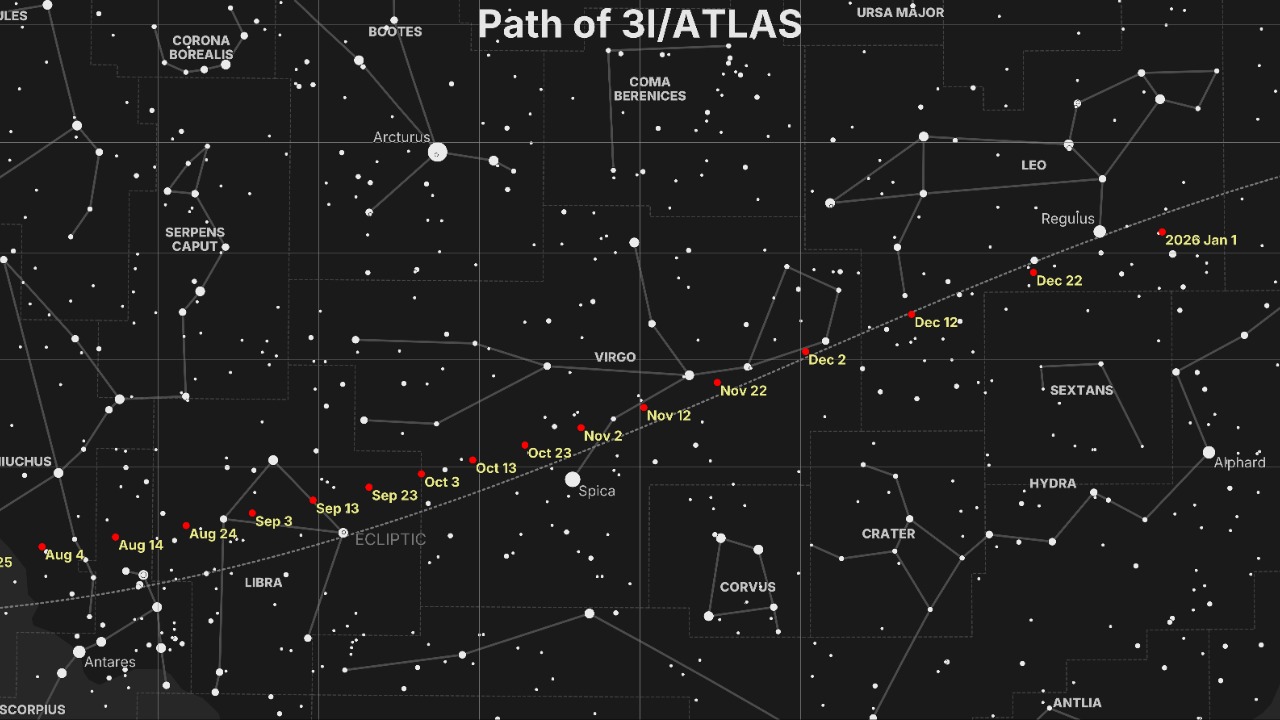
As the interstellar comet 3I/ATLAS continues its journey towards Earth, NASA is under increasing scrutiny to release the latest images of this celestial visitor. The recent discovery of a strange acceleration in the comet’s speed, coupled with the expansion of its tail captured in photos from September 8, 2025, has fueled speculation about a potential change in its trajectory. This has intensified calls for greater transparency from the U.S. space agency.
Background on Comet 3I/ATLAS
Comet 3I/ATLAS, an interstellar traveler, has piqued the interest of scientists and space enthusiasts alike due to its mysterious origins and path towards Earth. Unlike most comets that originate from within our solar system, 3I/ATLAS hails from the vast expanse of interstellar space. Its unique designation as 3I/ATLAS signifies its status as an interstellar object, with the ‘I’ standing for ‘interstellar’.
Initial observations of the comet revealed a number of intriguing characteristics. Its trajectory, originating from outside our solar system, has been a subject of intense study. The comet’s mysterious nature, underscored by its unpredictable behavior and physical attributes, has only added to the intrigue surrounding its approach.
Emergence of New Photographic Evidence
On September 8, 2025, new photos of the comet were released, showing its tail growing visibly in real-time. These images, captured as the comet neared the inner solar system, have been instrumental in tracking its activity. The photos have provided valuable insights into the comet’s composition and behavior, contributing significantly to our understanding of this interstellar visitor.
NASA’s Speed Anomaly Detection
A recent finding by NASA on November 6, 2025, has added another layer of mystery to the comet’s journey. The space agency detected a bizarre boost in the comet’s speed as it moves towards Earth. This unexpected acceleration has led to speculation that the comet may have changed its course. The discovery has significant implications for predicting the comet’s path and proximity to Earth, adding to the urgency for more data.
Accusations of Data Concealment
Amid these developments, accusations have emerged that the U.S. is withholding images of the mysterious interstellar comet. On November 5, 2025, claims surfaced that NASA and Mars-related images of 3I/ATLAS were being concealed from the public. These accusations have sparked a public debate over transparency in space exploration, with many demanding the release of all available data.
Scientific Community’s Push for Release
The scientific community has joined the chorus of voices demanding access to unreleased images of the comet. The need to study the comet’s evolving features, especially in light of the tail growth and speed changes observed in September and November 2025, has underscored the urgency for data sharing. Experts have called on NASA to prioritize research on interstellar objects and promote transparency by releasing all relevant images.
Broader Implications for Interstellar Studies
The anomalies observed in comet 3I/ATLAS, including the recent speed boost, could significantly advance our knowledge of extrasolar objects. The comet’s approach to Earth presents both potential risks and opportunities, underscoring the need for high-resolution images to better understand its behavior. The ongoing issues surrounding transparency could also impact future NASA missions involving interstellar visitors, highlighting the importance of open data sharing in advancing our understanding of the universe.
More from MorningOverview